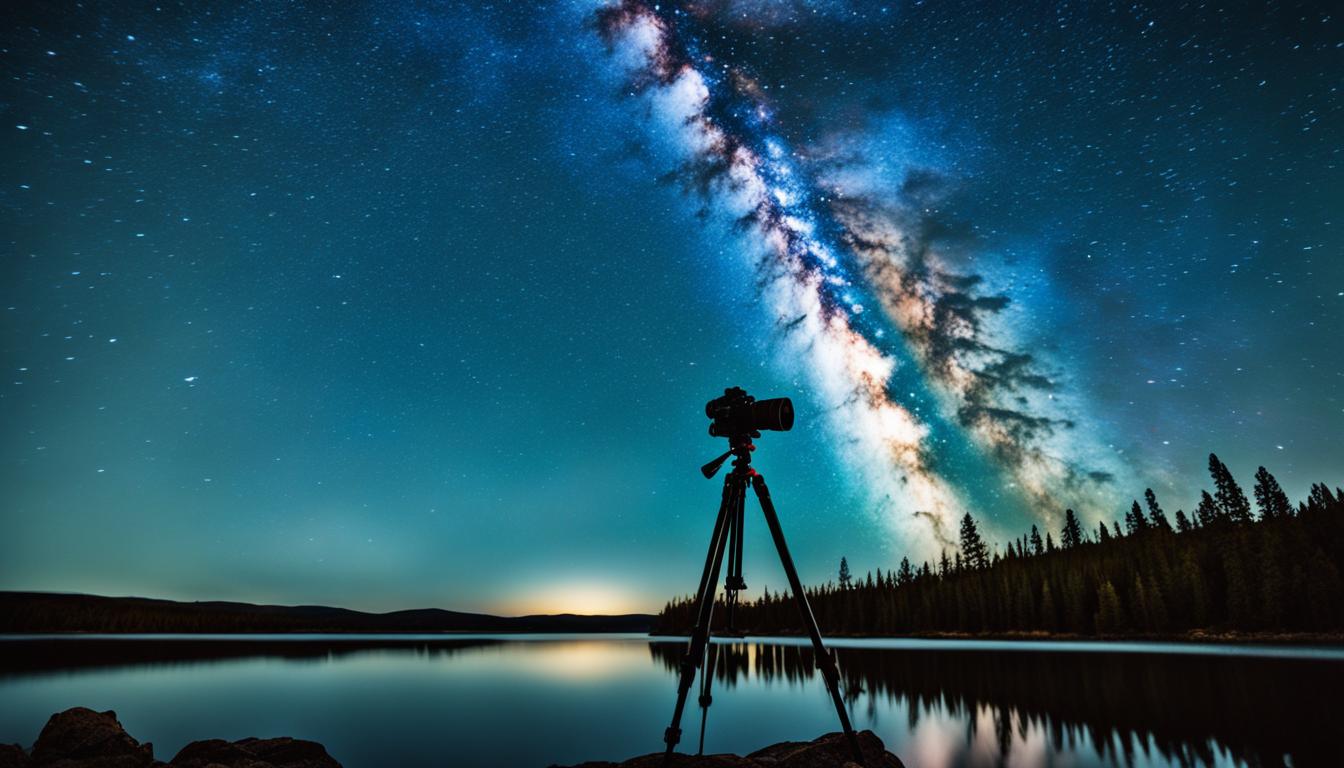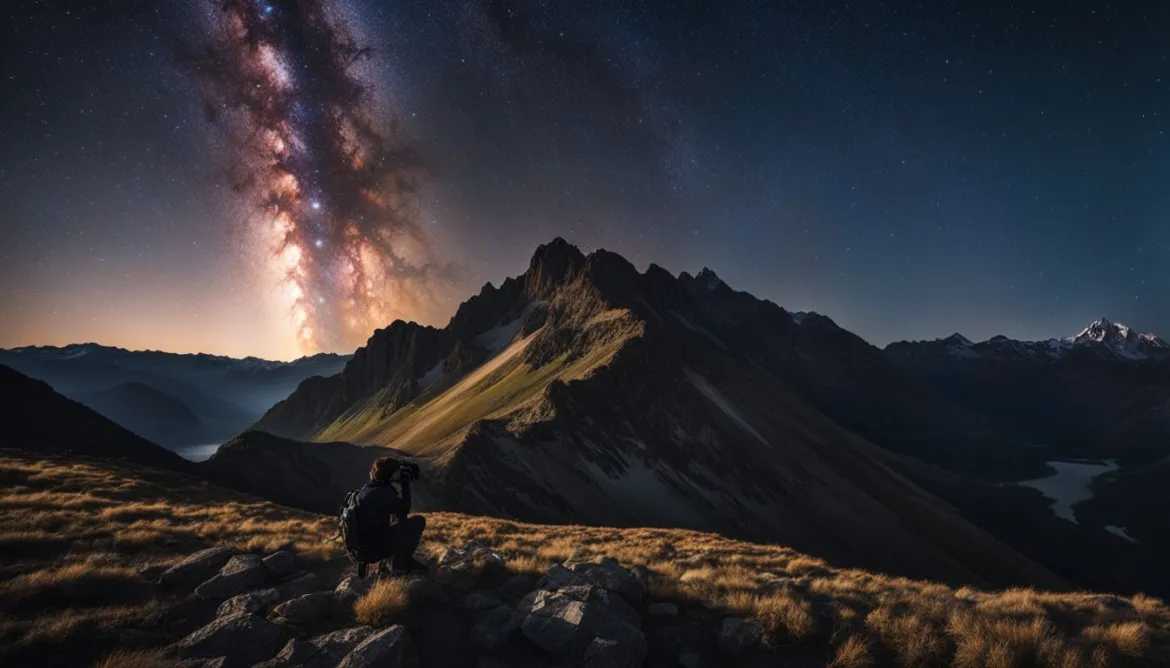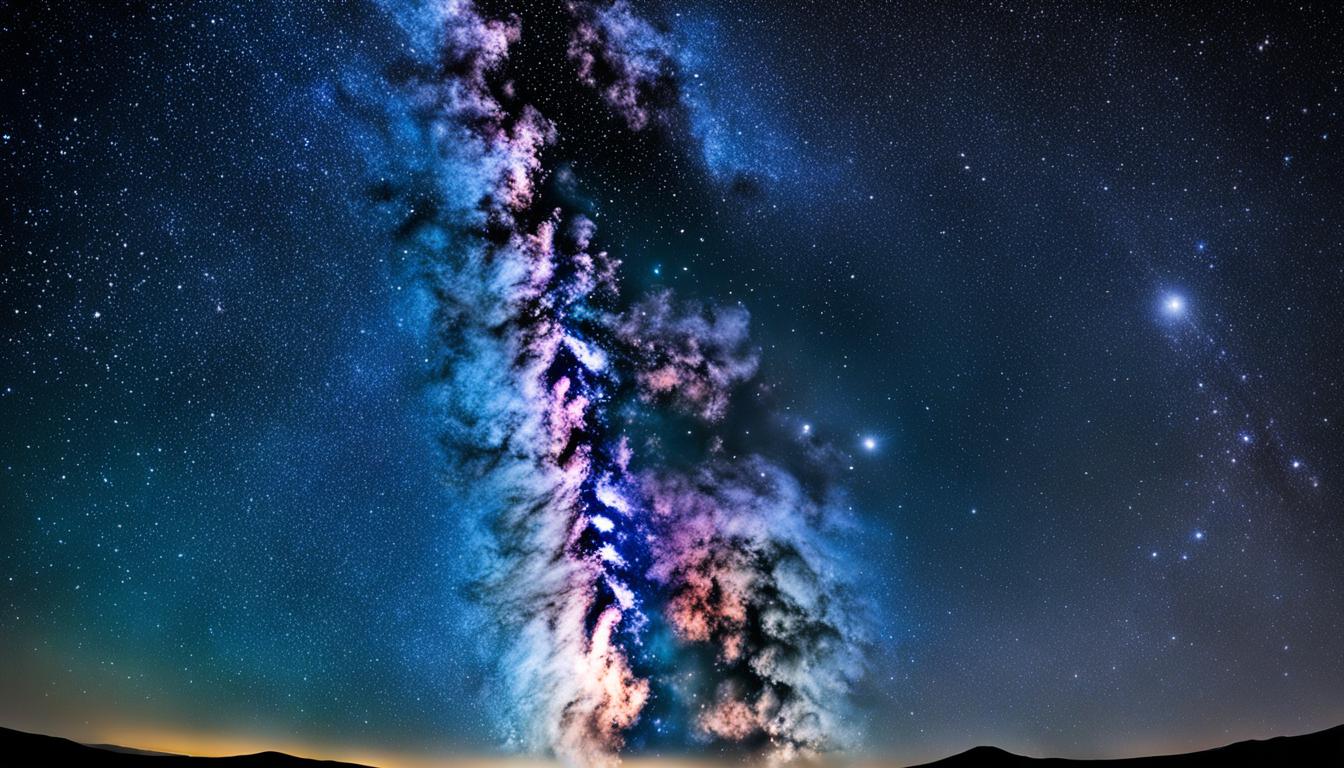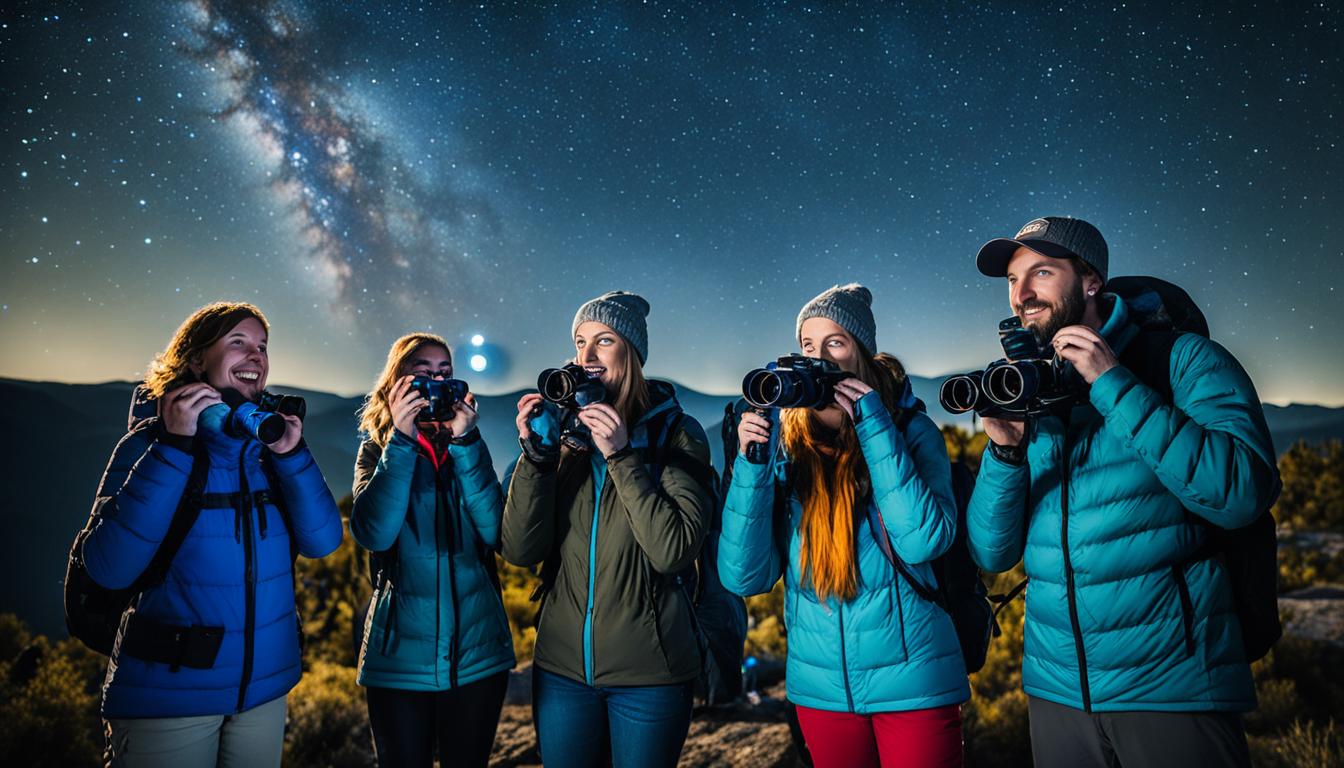Are you passionate about astrophotography but worried about the costs involved? Look no further! We have got you covered with our expert tips and tricks on how to pursue astrophotography on a budget. You don’t need to have the most expensive gear to capture breathtaking images of the night sky. With some clever strategies and affordable equipment choices, you can maximize your limited gear without compromising on quality.
In this article, we will guide you through the world of budget astrophotography, offering valuable advice on cameras, lenses, tripods, and other essential equipment for beginner astrophotographers. Whether you are a seasoned photographer looking to explore astrophotography or a beginner eager to start your journey, we have the insights you need to capture stunning celestial images without breaking the bank.
Key Takeaways:
- Maximize your limited gear without compromising on the quality of your astrophotography.
- Explore affordable options for cameras, lenses, tripods, and other essential equipment.
- Embrace the wonders of astrophotography without breaking the bank.
- Capture breathtaking images of the night sky with clever strategies and budget-friendly tips.
- Start your astrophotography journey today and uncover the beauty of the universe within your reach.
Understanding Astrophotography
Astrophotography is the art of capturing images of celestial objects using a camera and telescope. It combines photography skills with knowledge of astronomical objects to create awe-inspiring images of the cosmos. By photographing deep sky objects such as nebulae, star clusters, and galaxies, astrophotographers reveal the hidden wonders of the universe.
Astrophotography allows us to explore the mysteries of outer space and admire the breathtaking beauty that exists beyond our planet. Through careful observation, dedication, and technical expertise, photographers can capture celestial objects in remarkable detail, bringing us closer to the wonders of the cosmos.
To successfully capture celestial objects, astrophotographers need to consider various factors. The primary challenge lies in the vast distances between these objects and Earth. This means that capturing clear and detailed images requires long exposure times, allowing for more light to enter the camera sensor and reveal the intricate details of the objects.
Understanding the basics of astrophotography is crucial for anyone interested in venturing into this fascinating field. By grasping concepts such as exposure settings, focusing techniques, and image processing, photographers can enhance their skills and capture truly mesmerizing images of the universe.
“Astrophotography is a gateway to explore the depths of the cosmos. It allows us to capture the hidden wonders of the universe and share its beauty with the world.” – Jane Thompson, Astrophotographer
Whether you’re an experienced photographer or just starting your journey, astrophotography offers a unique opportunity to connect with the cosmos. It allows us to marvel at the vastness of the universe, revealing its hidden secrets through the art of photography.
Revealing the Hidden Wonders
One of the most rewarding aspects of astrophotography is the ability to capture celestial objects that are often invisible to the naked eye. Through long exposure images, photographers can reveal the intricate details of nebulae, star clusters, and galaxies that would otherwise go unnoticed.
These cosmic wonders exist billions of light-years away from us, yet through astrophotography, we can bring them closer and appreciate their exquisite beauty. Each captured image tells a story, unraveling the mysteries of the universe and inspiring awe in those who gaze upon them.
As astrophotographers, we have the privilege of showcasing the hidden wonders of the universe and inspiring others to explore the cosmos. Through our photographs, we contribute to the collective fascination and understanding of the celestial realm.
Essential Equipment for Astrophotography
To embark on an astrophotography journey, you’ll need a carefully selected set of essential equipment. Each piece plays a crucial role in capturing the breathtaking beauty of the night sky.
1. Camera
A DSLR or mirrorless camera with manual controls is the cornerstone of astrophotography equipment. This allows you to have full control over exposure settings, enabling you to photograph celestial objects with precision.
2. Lens
A wide-angle lens with a low aperture is essential for capturing the vastness of the night sky. A wide field of view combined with a low aperture allows more light to enter the camera sensor, resulting in brighter and more detailed astrophotography images.
3. Tripod
A sturdy tripod is essential for astrophotography, as it provides stability during long exposures. This prevents camera shake and ensures your images remain sharp and crisp. Look for tripods with good build quality and a weight capacity suitable for your camera setup.
4. Remote Shutter Release
To minimize camera shake even further, a remote shutter release or intervalometer is highly recommended. This handy tool allows you to trigger the camera without physically touching it, reducing the risk of introducing vibrations that can degrade image quality.
5. Telescope (optional)
While not mandatory, a telescope can enhance your astrophotography endeavors by allowing you to capture more detailed images of celestial objects. Telescopes with a focal length suitable for astrophotography provide greater magnification and allow you to photograph objects that are beyond the reach of a standard camera lens.
Now let’s visualize the essential equipment for astrophotography in the table below:
| Equipment | Description |
|---|---|
| Camera | DSLR or mirrorless camera with manual controls |
| Lens | Wide-angle lens with a low aperture |
| Tripod | Sturdy tripod for stability during long exposures |
| Remote Shutter Release | Tool to minimize camera shake |
| Telescope (optional) | For capturing detailed images of celestial objects |
Image src=”https://seowriting.ai/32_6.png” alt=”Astrophotography Equipment”>
Budget-Friendly Astrophotography Setup
Building a budget-friendly astrophotography setup is an attainable goal, even for those on a tight budget. By carefully selecting the right equipment, you can capture stunning celestial images without breaking the bank. In this section, we will explore a recommended budget astrophotography setup that includes the Nikon D750 camera, the Samyang 14mm f/2.8 lens, the Magnus TR-13 portable travel tripod, and the iOptron SkyTracker Pro star tracker.
Nikon D750 Camera
The Nikon D750 is a versatile and capable camera that is often available at a reduced price when purchased second-hand. Despite its affordability, it offers excellent image quality and low-light performance, making it ideal for astrophotography.
Samyang 14mm f/2.8 Lens
The Samyang 14mm f/2.8 lens is a wide-angle lens with a low aperture, perfect for capturing the expansive night sky. Its affordable price point and excellent optical performance make it a popular choice among astrophotographers on a budget.
Magnus TR-13 Portable Travel Tripod
The Magnus TR-13 portable travel tripod is a lightweight and sturdy option for astrophotography. Its compact size makes it easy to transport, while its stability ensures sharp and blur-free images during long exposures.
iOptron SkyTracker Pro Star Tracker
The iOptron SkyTracker Pro is a compact and affordable star tracker that helps astrophotographers capture sharp and detailed images of celestial objects. By compensating for the Earth’s rotation, it allows for longer exposure times without star trails.
With this budget-friendly setup, you’ll have the essential equipment needed to delve into the fascinating world of astrophotography without breaking the bank. By making smart choices and investing in reliable yet affordable gear, you can capture breathtaking images of the night sky.

| Equipment | Price |
|---|---|
| Nikon D750 | $1,199 for a new camera (second-hand prices vary) |
| Samyang 14mm f/2.8 lens | $299 |
| Magnus TR-13 Portable Travel Tripod | $49.95 |
| iOptron SkyTracker Pro Star Tracker | $299 |
Conclusion
Astrophotography is an exciting and rewarding hobby that allows us to capture the beauty of the universe without breaking the bank. By following budget-friendly tips and techniques, beginner astrophotographers can maximize their limited equipment, enabling affordable astrophotography adventures.
One of the key aspects of astrophotography on a budget is carefully selecting the right equipment. By opting for affordable options such as second-hand cameras or budget-friendly lenses, photographers can capture stunning images of the night sky without compromising on quality.
In addition to equipment choices, it’s crucial to consider cost-effective techniques for capturing the universe’s wonders. This includes planning astrophotography sessions during moonless nights when the skies are darker, utilizing long exposure photography to capture more details, and experimenting with different compositions and angles to capture unique perspectives.
So, if you’ve always wanted to embrace the beauty of the universe through your lens but were concerned about the costs, worry no more. With our tips for astrophotography on a budget, you can embark on your affordable astrophotography journey today and capture the breathtaking sights of the cosmos without breaking the bank.
FAQ
Is astrophotography an expensive hobby?
Astrophotography can be a gear-intensive hobby, but it is possible to pursue it on a budget. By making careful equipment choices and following budget-friendly tips, you can maximize your limited gear without breaking the bank.
What equipment do I need for astrophotography?
To start with astrophotography, you will need a DSLR or mirrorless camera with manual controls, a wide-angle lens with a low aperture, a sturdy tripod, a remote shutter release or intervalometer, and optionally, a telescope.
What camera is recommended for astrophotography on a budget?
For budget astrophotography, the Nikon D750 camera is a great option. You can purchase this camera second-hand at a reduced price without sacrificing quality.
Which lens should I use for capturing the night sky?
The Samyang 14mm f/2.8 lens is a popular choice for astrophotography on a budget. It offers a wide angle of view and a low aperture, making it ideal for capturing the night sky.
What tripod should I use for stable long exposures?
The Magnus TR-13 portable travel tripod is a budget-friendly option that provides stability for long exposures. Its compact size and lightweight design make it ideal for astrophotography on the go.
What is the iOptron SkyTracker Pro used for in astrophotography?
The iOptron SkyTracker Pro is a star tracker that helps enhance astrophotography results. It compensates for the Earth’s rotation, allowing for longer exposures and capturing more detailed images of celestial objects.
Can I Still Take Great Astrophotography Shots with Limited Gear?
Yes, you can still take great astrophotography shots with limited gear. It’s possible to build your own astrophotography rig using budget-friendly equipment. With the right techniques and knowledge, you can capture stunning images of the night sky, even with a restricted setup.




